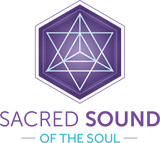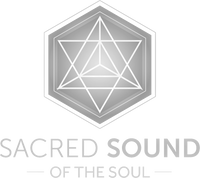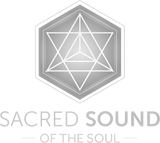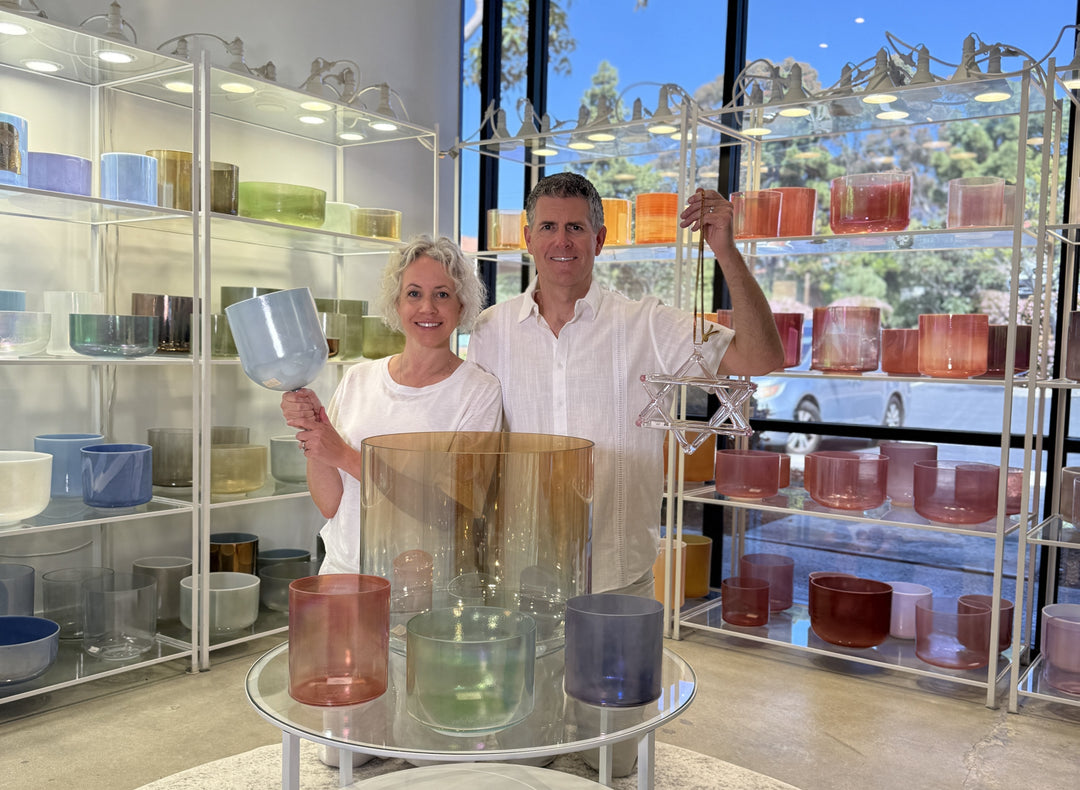Comprehensive Guide to Crystal Singing Bowl Tuning
Getting Started: The Importance of Choosing Properly Tuned Bowls
The key to a deeply pleasing and impactful sound bath experience lies in ensuring that all the bowls played together form a harmonious "family." Often, disappointment arises from neglecting the tuning aspect when acquiring bowls. Properly tuned bowls enhance resonance, clarity, and emotional impact.
Making Sure Your Bowls Sound In Tune (Easy Method)
Crystal Tones bowls come marked with cents. To ensure harmony, select bowls where the total range between the lowest and highest cents markings of all bowls you intend to play together is no more than 10 to 15 cents. This straightforward method ensures a harmonious and pleasant sound without the need for additional tools.
More Advanced Tuning: Using a Tuner
For a more precise approach, especially with unmarked bowls, using a tuner is recommended:
-
Tuner T1 (App): Provides detailed and convenient tuning information.
-
Standard Music Tuner: A physical chromatic tuner like the KLIQ MetroPitch from Amazon offers accurate tuning verification.
How to Use a Tuner to Measure Bowl Pitch and Cents
-
Strike or play your bowl gently to produce a clear, steady tone.
-
Position your tuner close to the bowl, allowing it to detect the pitch easily.
-
Observe the tuner display:
-
It will indicate the note (e.g., A, C#, etc.) and show how closely your bowl aligns with that note.
-
It also displays the cents offset—how sharp (+) or flat (-) your bowl is relative to the note shown.
-
-
Note the cents measurement:
-
If you have multiple bowls, repeat this process to ensure they fall within the recommended cent range.
-
Understanding Cents in Tuning
A "cent" is a unit of measurement used in music tuning that describes the smallest audible pitch difference. One semitone (half-step in music) is divided into 100 cents. Thus, cents allow for precise measurements and adjustments in tuning.
Examples of Harmonious and Disharmonious Triads (Major Triads)
| Harmonious Triad Example | Note | Cents |
|---|---|---|
| Example 1 | C | +5 |
| E | +10 | |
| G | +0 | |
| Example 2 | A | -3 |
| C# | +2 | |
| E | -8 |
These examples are within a harmonious range and sound pleasant.
| Disharmonious Triad Example | Note | Cents |
| Example 1 | C | +0 |
| E | +25 | |
| G | -20 | |
| Example 2 | A | +0 |
| C# | -30 | |
| E | +35 |
These examples are outside the recommended 10-15 cents range and produce noticeable discord.
Understanding Octaves and Note Labeling
An octave is a musical interval spanning eight notes in the scale. Each time you move up an octave, the frequency doubles. Musical notes are labeled with the note name followed by a number indicating the octave, such as C4, A4, or C5.
On a piano:
-
Middle C is labeled C4.
-
Notes ascending from C4 increase numerically (D4, E4, etc.) up to the next C, which is C5.
-
Notes descending below C4 decrease numerically (B3, A3, etc.).
This systematic labeling helps musicians communicate clearly about pitch.
How Bowl Size and Thickness Affect Pitch:
The size and thickness of a bowl significantly influence its pitch. Generally, larger bowls produce lower pitches (lower octaves), and smaller bowls produce higher pitches (higher octaves). Additionally, thicker-walled bowls produce higher pitches, while thinner-walled bowls produce lower pitches.
Crystal bowls typically span from the 2nd to the 5th octaves, but the vast majority of bowls available are found in the 4th octave.
Understanding Hz (Hertz) in Music
Hertz (Hz) measures frequency, or the number of sound wave cycles per second. In music, frequency determines pitch: the higher the frequency, the higher the pitch.
| Note | Frequency (Hz) |
| C4 | 261.63 |
| D4 | 293.66 |
| E4 | 329.63 |
| F4 | 349.23 |
| G4 | 392.00 |
| A4 | 440.00 |
| B4 | 493.88 |
| C5 | 523.25 |
Frequency Basics: 432 Hz, 440 Hz, and 528 Hz
-
432 Hz (A4): Associated with grounding and natural resonance. Typically around -25 to -35 cents.
-
440 Hz (A4): Standard "concert pitch," universally recognized as A4. Typically within ±10 cents.
-
528 Hz (C5): Known as the "love frequency," linked to healing. Typically around +15 to +20 cents.
FAQ Summary
-
How do I ensure bowls harmonize well? Use bowls with a total cent range of no more than 10-15 cents.
-
Must my bowls be tuned to 432 Hz or 528 Hz for optimal results? No, bowls harmonize well if their tuning is close in cents.
-
What are cents in tuning? Cents measure subtle pitch variations; 100 cents equal one semitone.
-
How do I measure bowl pitch accurately? Use a tuner app like Tuner T1 or a standard chromatic tuner.
-
What does the octave number next to a note mean? It indicates the specific octave of the pitch, with higher numbers indicating higher pitches.
-
Why might bowls sound discordant? They may be outside the recommended cent range (more than 15 cents apart).
-
Do bowl materials affect pitch? Materials mainly affect timbre and resonance, not the fundamental pitch or cents measurement.




